
Nanofabrication
Scope & Guideline
Empowering Knowledge in Nanofabrication for All
Introduction
Aims and Scopes
- Nanomaterial Synthesis and Characterization:
This area focuses on the development and characterization of various nanomaterials such as nanoparticles, nanocomposites, and nanostructured materials, employing techniques like green synthesis, chemical synthesis, and physical methods. - Biomedical Applications of Nanotechnology:
The journal highlights the application of nanomaterials in biomedicine, including drug delivery systems, cancer therapeutics, antimicrobial agents, and diagnostic tools, showcasing their potential to revolutionize healthcare. - Environmental Remediation and Sustainability:
Research articles often explore the use of nanotechnology for environmental applications, including wastewater treatment, pollutant degradation, and sustainable energy solutions, emphasizing the role of nanomaterials in addressing global environmental challenges. - Nanofabrication Techniques:
The journal includes methodologies related to the fabrication of nanostructures, such as electrospinning, layer-by-layer assembly, and 3D printing, which are crucial for producing advanced materials with tailored properties. - Energy Conversion and Storage Solutions:
Research in this area focuses on the development of nanomaterials for energy applications, including photocatalysis, supercapacitors, and batteries, which are essential for sustainable energy systems.
Trending and Emerging
- Green and Sustainable Nanotechnology:
There is a growing emphasis on eco-friendly synthesis methods and sustainable applications of nanomaterials, reflecting a broader societal shift towards sustainability and environmental responsibility. - Nanotechnology in Cancer Treatment:
An increasing number of publications focus on the application of nanotechnology in oncology, including targeted drug delivery systems and nanomaterials for cancer imaging, indicating a significant trend towards using nanotechnology in healthcare. - Smart and Responsive Nanomaterials:
Research on stimuli-responsive nanomaterials, such as those that react to environmental triggers (pH, temperature, etc.), is on the rise, showcasing the potential for advanced applications in drug delivery and theranostics. - Nanotechnology for Water Treatment:
There is a notable increase in studies addressing the use of nanomaterials for water purification and pollutant removal, highlighting the importance of nanotechnology in solving global water quality issues. - Integration of Nanotechnology with Other Disciplines:
Emerging research is increasingly interdisciplinary, combining nanotechnology with fields such as biotechnology, materials science, and environmental science, indicating a trend towards collaborative approaches for complex problem-solving.
Declining or Waning
- Traditional Metal Nanoparticles:
Research on conventional metal nanoparticles, such as gold and silver, is becoming less prominent as newer materials and innovative synthesis techniques gain attention, indicating a shift towards more complex nanostructures. - Non-Green Synthesis Methods:
There is a noticeable decline in the publication of papers utilizing non-green synthesis methods for nanomaterial production. The emphasis on sustainable and eco-friendly methodologies has overshadowed traditional chemical approaches. - Basic Characterization Studies:
The focus on fundamental characterization studies of nanomaterials is diminishing, as researchers increasingly prioritize applications and functional aspects over basic material properties.
Similar Journals

ACS Nanoscience Au
Transforming Research into Open Access DiscoveriesACS Nanoscience Au, published by the American Chemical Society, is a leading open-access journal dedicated to the rapidly evolving field of nanoscience. Since its inception in 2021, this journal has established itself within the top quartiles of academic publishing, ranking Q1 in both Chemistry and Materials Science for 2023. With a commitment to disseminating high-quality research, it provides a platform for innovative findings in nanomaterials, nanotechnology applications, and associated interdisciplinary studies. The journal is based in the United States and embraces an open-access model, ensuring that research is freely accessible to a global audience. This initiative not only enhances the visibility of authors' work but also facilitates collaboration across scientific domains. As a vital resource for researchers, professionals, and students alike, ACS Nanoscience Au plays a crucial role in advancing knowledge in the nanoscience community.

Journal of Nanostructure in Chemistry
Transforming the Future of NanotechnologyThe Journal of Nanostructure in Chemistry, published by Springer Heidelberg, stands at the forefront of nanotechnology and its applications in the field of chemistry. With an impressive Q1 ranking in Chemistry (Miscellaneous) as of 2023, this journal offers a platform for disseminating groundbreaking research and innovative practices that shape the future of nanostructured materials. Recognized among the top-tier publications in its category—with a commendable 96th percentile ranking in Scopus—this journal provides researchers, professionals, and students alike with invaluable insights into the intricate interplay between nanoscale structures and chemical principles. Despite being a non-open access platform, its commitment to high-quality, peer-reviewed content continues to drive scientific discourse and collaboration within the international research community. The Journal of Nanostructure in Chemistry, which spans from 2013 to 2024, is dedicated to advancing knowledge and fostering innovation in nanochemistry, making it an essential resource for anyone looking to stay ahead in this rapidly evolving discipline.
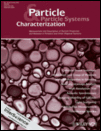
PARTICLE & PARTICLE SYSTEMS CHARACTERIZATION
Fostering Collaboration in Particle ResearchPARTICLE & PARTICLE SYSTEMS CHARACTERIZATION is a distinguished journal dedicated to advancing the knowledge within the fields of Chemistry, Condensed Matter Physics, and Materials Science. Published by WILEY-V C H VERLAG GMBH in Germany, this journal has established a solid reputation since its inception in 1984, showcasing research aimed at understanding the intricate properties and behaviors of particulate systems. With an impressive Q2 ranking in its respective categories and Scopus ranks indicating a robust standing in the global research community, it serves as an essential resource for researchers, professionals, and students. Although it does not currently offer Open Access options, its comprehensive articles and reviews provide valuable insights that contribute significantly to the ongoing discourse in these scientific domains. As it prepares to celebrate four decades of publication, PARTICLE & PARTICLE SYSTEMS CHARACTERIZATION continues to provide a vital platform for emerging knowledge, fostering innovation and collaboration among scientists dedicated to the study of particle systems.
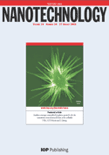
NANOTECHNOLOGY
Unleashing Potential through Nanoscience Insights.NANOTECHNOLOGY is a premier academic journal published by IOP Publishing Ltd, focusing on cutting-edge advancements in the interdisciplinary field of nanoscience and nanotechnology. With a strong emphasis on research that bridges biology, chemistry, engineering, and materials science, this journal presents high-quality, peer-reviewed articles that cater to the diverse interests of researchers, professionals, and students alike. NANOTECHNOLOGY boasts an impressive ISSN: 0957-4484 and E-ISSN: 1361-6528, and holds a notable position within Scopus, ranked in the second quartile (Q2) across multiple categories including Bioengineering and Mechanical Engineering, underscoring its vital role in advancing the field. The journal's impact is further highlighted by its robust rankings, making it essential reading for those looking to stay at the forefront of nanotechnology research. Commencing in 1990 and with publication extending through to 2024, NANOTECHNOLOGY provides a unique platform for disseminating significant findings and innovative methodologies while fostering collaborations across various scientific disciplines. In a rapidly evolving technological landscape, this journal not only enhances academic discourse but also contributes to the practical applications of nanotechnology in real-world scenarios.
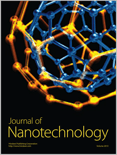
Journal of Nanotechnology
Fostering Interdisciplinary Discoveries in NanotechnologyThe Journal of Nanotechnology, published by Hindawi Ltd., is a premier open-access platform dedicated to delivering high-quality research in the dynamic field of nanotechnology. With the ISSN 1687-9503 and E-ISSN 1687-9511, this journal has been at the forefront of disseminating innovative findings since its transition to open access in 2009, fostering a global dialogue among researchers, professionals, and students. Based in Egypt, the journal maintains its commitment to advancing the material science sector, currently holding a prestigious Q2 ranking in the 2023 Materials Science (miscellaneous) category, reflecting its significant contribution to the field. With a Scopus ranking of #162 out of 463 journals in General Materials Science, placing it in the 65th percentile, the Journal of Nanotechnology serves as a crucial resource for those looking to explore the latest advancements and applications in nanomaterials. The journal invites submissions that align with its scope, which emphasizes interdisciplinary approaches and novel methodologies, promising to enhance both academic and practical aspects of nanotechnology.

Materials Futures
Connecting researchers to shape the future of biomaterials.Materials Futures, an esteemed journal published by IOP Publishing Ltd, stands out as a pivotal resource in the field of Materials Science, with a particular emphasis on Biomaterials. Launched in 2022 and operating under an Open Access model, the journal aims to foster accessibility and rapid dissemination of pioneering research, thus catering to the diverse needs of researchers, professionals, and students globally. With a commendable Scopus Rank of #46 out of 137 in its category, placing it in the 66th percentile, and recognized as a Q1 journal as of 2023, Materials Futures provides a vital platform for cutting-edge studies and innovations that address contemporary challenges in materials science. As the journal evolves through its convergence period from 2022 to 2024, it continues to attract high-quality submissions aimed at advancing knowledge and applications within the biomaterials sector, reflecting its commitment to contributing vital insights and fostering collaboration across disciplines. Explore Materials Futures for your research endeavors and join a community dedicated to shaping the future of materials.
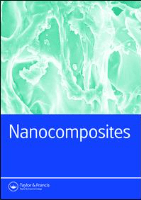
Nanocomposites
Bridging Disciplines through Nanocomposite ResearchNanocomposites, published by Taylor & Francis Ltd, is a leading open-access journal dedicated to the interdisciplinary field of nanomaterials and their applications in composites. With its ISSN 2055-0324 and E-ISSN 2055-0332, the journal has established itself as a premier platform for disseminating high-quality research since its inception in 2015. It is notable for its impressive Q1 rankings across various categories, including Ceramics and Composites, Materials Chemistry, Mechanical Engineering, and Mechanics of Materials, reflecting its significant impact on the scientific community. The journal is recognized for its rigorous peer-review process and rapid publication times, making it an essential resource for researchers and professionals seeking to advance knowledge in the synthesis, characterization, and application of nanocomposite materials. With an open access policy implemented in 2017, Nanocomposites ensures that cutting-edge research is accessible to a global audience, fostering collaboration and innovation across disciplines. Emphasizing the critical role that nanocomposites play in advancing technology, this journal invites contributions that push the boundaries of current understanding and application.

FULLERENES NANOTUBES AND CARBON NANOSTRUCTURES
Advancing Nanotechnology Through Carbon InnovationFULLERENES NANOTUBES AND CARBON NANOSTRUCTURES, published by Taylor & Francis Inc, stands at the forefront of research in the fields of nanotechnology, materials science, and organic chemistry. With an ISSN of 1536-383X and an E-ISSN of 1536-4046, this journal offers a critical platform for disseminating significant findings related to carbon-based nanostructures, materials characterization, and their innovative applications. Recognized for its scholarly impact, the journal enjoys a Q2 ranking in several fields, including Atomic and Molecular Physics, Materials Science, and Organic Chemistry, reflecting its commitment to quality research. Since its inception in 2002, it has maintained a rigorous publication standard and provides open access options, enabling a diverse audience, from researchers to industry professionals, to engage with the latest advancements. The journal's comprehensive scope across converged years until 2024 emphasizes its pivotal role in fostering knowledge in the rapidly evolving realm of nanoscience and nanotechnology. Researchers and practitioners alike are encouraged to explore the cutting-edge research showcased in this vital resource.
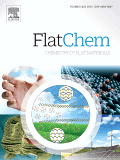
FlatChem
Fostering Global Collaboration in Materials InnovationFlatChem, an esteemed journal published by ELSEVIER, serves as a premier platform for disseminating high-quality research in the dynamic fields of ceramic and composite materials, electronic and optical materials, materials chemistry, and surfaces, coatings, and films. Since its inception in 2017, the journal has garnered a robust reputation, evidenced by its rank in the top quartile (Q1) across multiple categories, including a commendable rank of #25/127 in Ceramics and Composites and #49/284 in Electronic, Optical and Magnetic Materials. With a focus on pioneering advancements and innovative methodologies, FlatChem not only highlights cutting-edge research but also promotes collaboration and knowledge exchange within the scientific community. The journal’s impact is underscored by its impressive rankings in Scopus, marking it as a vital resource for researchers, professionals, and students aiming to stay at the forefront of materials science. As an open-access journal, it ensures that groundbreaking findings are readily accessible, fostering a broader understanding and application of materials innovation worldwide. The journal is based in the Netherlands, with its headquarters located at RADARWEG 29, 1043 NX AMSTERDAM, NETHERLANDS. Join the vibrant community contributing to FlatChem and engage with the forefront of material advancements.

Nanoscale Advances
Leading the Charge in Nanoscience Advancements.Nanoscale Advances, published by the Royal Society of Chemistry, stands out as a leading open-access journal dedicated to advancing the field of nanoscience and nanotechnology since its inception in 2018. With a specialized focus on areas such as atomic and molecular physics, bioengineering, chemistry, and materials science, this journal has consistently achieved top-tier rankings across several categories, reflecting its high-impact contribution to research and innovation. Currently classified in the Q1 quartile for both Atomic and Molecular Physics and Chemistry (Miscellaneous), and Q2 for Bioengineering, its prestige is underscored by impressive Scopus rankings, including a notable 34th position in General Engineering. With its commitment to disseminating high-quality research, Nanoscale Advances serves as an invaluable resource for researchers, professionals, and students alike, fostering collaboration and scholarly exchange in the rapidly evolving landscape of nanotechnology.